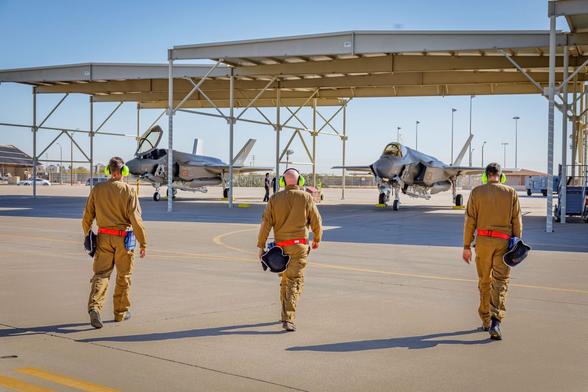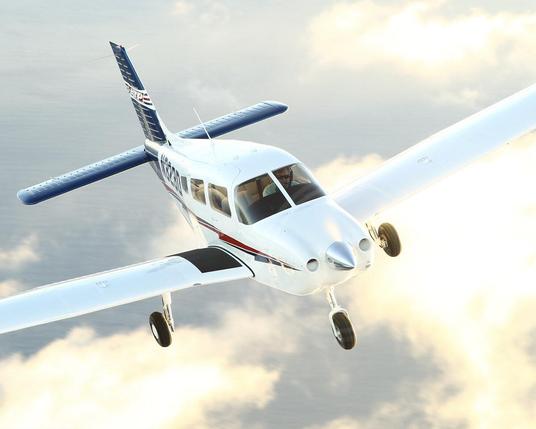Electric Aviation and the Future of Clean Flight
Author(s): Scott Douglas Jacobsen
Publication (Outlet/Website): The Good Men Project
Publication Date (yyyy/mm/dd): 2025/07/03
Gregory Blatt, co-founder of H55 and a key figure behind the Solar Impulse legacy, leads one of the world’s foremost electric aviation companies. In this in-depth conversation, Blatt discusses H55’s inclusion in TIME’s Top 250 GreenTech Companies of 2025 and the broader implications for clean mobility. He highlights the Bristell B23 Energic’s low-emission, low-noise profile, emphasizing its benefits for flight schools and densely populated areas. Blatt outlines H55’s strategy for certification in Europe and the U.S., as well as its scalability through modular electric propulsion systems and partnerships with firms such as Piper, CAE, and RTX. He also addresses the economic and climate benefits of electrification, advocating for a pragmatic approach to the energy mix. With growing pilot demand and rapid innovation, H55 is helping redefine aviation for a more sustainable future.
Scott Douglas Jacobsen: So, we are here with Gregory Blatt, and we are going to explore a few questions. You have been included in TIME’s list of the World’s Top 250 GreenTech Companies of 2025. What does this recognition signify for the future of electric aviation?
Gregory Blatt: Well, there are a few critical aspects to this recognition by TIME magazine, and you have already pointed to one of them.
First, it is the recognition of a small Swiss company and the work we are doing in electric aviation. H55 is based in Sion, Switzerland, and we operate in a highly specialized sector. Only four Swiss companies made TIME’s Top 250 list, so being among them shows that, in our own focused and mission-driven way, we are gaining global recognition for the advancements we have achieved. That includes our legacy from the Solar Impulse project, and the work we are doing now—most notably, developing certified electric propulsion and battery management systems.
By next year, we will be the first company to bring a certified electric propulsion system to the general aviation market. That is a milestone not just for us but for the industry.
Second, TIME’s recognition reflects a broader understanding of what clean mobility can look like. Typically, when people think of mobility, they think of cars. However, clean mobility extends far beyond terrestrial transportation. H55 demonstrates that sustainable aviation is not only possible but already operational with the technology having been de-risked.
Notably, TIME is examining clean mobility as a comprehensive trend. They are not treating this as a fleeting innovation or an experimental idea like Apple’s Newton, which was ahead of its time but did not last. Instead, they see clean aviation as a viable and necessary technological shift. It is not a gadget—it’s a long-term solution offering economic, technological, and societal benefits.
Of course, we’re not the only ones in the space. Other companies are building electric aircraft—whether fixed-wing planes, VTOLs, or flying taxis. Some are working on charging infrastructure or subcomponents. H55 is focused on the electric propulsion systems that power these aircraft.
This recognition also serves as a signal that clean aviation is a serious and rapidly expanding industry. On our end, H55 has already hired around 120 engineers in Switzerland and Canada—many in roles that didn’t even exist five or seven years ago. That’s a powerful example of how clean tech is not just an environmental necessity but also an economic opportunity.
And maybe this is a broader point, but we need to stop framing environmental protection as a cost. It’s also a generator of jobs and innovation. In our case, it’s producing skilled engineering roles in entirely new domains.
That’s why I prefer to call it cleantech, not just green tech. The focus is on building scalable, efficient, zero-emission solutions—and they’re already here. Because when we think of it that way, we see it as an economic impetus—not just the cost of doing business. Sorry, that was a long answer to your question.
Jacobsen: Why is it important for H55 to be present in the United States right now, and how does the Across USA Tour support your mission? Where can people follow the tour and learn more?
Blatt: We’re bringing fully electric flight to general aviation and pilot training as we embark on the H55 Across USA tour. The tour began in April at the Sun ’n Fun Aerospace Expo in Florida and runs through early August, covering eight states. Powered by H55’s electric propulsion system (EPS), the Bristell B23 Energic airplane—is an all-electric 2-seater designed for pilot training, general aviation and regional transport.
H55 began its journey in Florida earlier this year as part of an 8-state U.S. tour showcasing the future of clean, quiet, and sustainable flight. Each stop is designed to highlight H55’s electric propulsion system—motor, inverter, battery modules, and energy and power management systems—while engaging key stakeholders across the aviation ecosystem.
The goal of the H55 Across USA tour is to accelerate the shift toward cleaner, quieter, more efficient, and more affordable aviation. We’re doing that by showcasing our certified electric propulsion systems and aircraft integration solutions designed for general aviation and regional transport. Along the way, we’re engaging with flight schools and aeroclubs, airports and fixed base operators (FBOs), maintenance, repair, and overhaul providers (MROs), aerospace universities, military academies, and aviation enthusiasts across the country.
As of our third tour stop at Signature Aviation in Scottsdale, Arizona, we passed a big milestone—over 100 U.S. landings, officially reaching 104 upon our return to Falcon Field that day.
We’ve just completed our fourth stop in Las Vegas, and next we’re heading to Palo Alto, California, before heading back east. Next, we visit Colorado Springs, Oshkosh for EAA AirVenture, the largest fly-in in North America, and then The Hamptons to end the tour. You can follow the full journey, meet the team, learn how to join us at our next stops, and trace our journey from the groundbreaking Solar Impulse project at https://across-usa.h55.ch.
Jacobsen: The Bristell B23 Energic is intriguing regarding electric pilot training. What are the technical advantages that make it viable for widespread adoption today?
Blatt: Okay, now you’re going to have me talking for three days! Let’s start with the obvious low-hanging fruit—societal, environmental, and noise-related advantages.
First, no pollution, no noise. That’s a big win for flight training schools located near densely populated areas. You know, places where neighbors often complain because aircraft are constantly flying circuits overhead, generating noise all day long. From a societal perspective, this makes a great deal of sense.
Then there’s the pollution factor—zero emissions from the aircraft. But those are the broader societal benefits.
Now, let’s talk about the economic advantages. An electric airplane has far fewer moving parts and is much less complex than its combustion-engine equivalent. That significantly reduces maintenance needs. You don’t have to change out an engine every 2,500 hours, which you would with a similarly sized combustion aircraft used in training.
You also avoid fuel costs—no Avgas is required. So, from an operational standpoint, electric flight is highly cost-effective compared to combustion.
From a pilot training perspective, there are additional technical benefits that the general public might not immediately think of. For example, in Arizona, flight schools typically consume between 1.6 and 2.4 gallons of fuel just during lineup time—while idling and waiting to take off. We don’t have that issue. In a conventional training session that uses about 16 gallons, only 14 are used for flying, and two go to waste during idle time. With the B23 Energic, all your energy goes directly into the flight. There’s no idle fuel burn.
There’s also the reduced noise issue, which flight instructors love. Less noise means less stress for students and a better learning environment. There’s no need to mix oil and fuel, and the aircraft handles high altitudes and temperatures without added complexity. It’s a much simpler, cleaner training experience for flight schools.
The feedback has been incredibly positive. Since starting our U.S. campaign, we’ve completed more than 110 landings. The reviews—and I say this objectively because the testimonials are public, and we’re not using AI to filter them—have been overwhelmingly favourable.
Pilots love it. They love the responsiveness, the quietness, and the sleek, modern look of the aircraft—it appeals to the next generation of pilots. Whether for economic, societal, or operational reasons, they consistently tell us it makes training easier and more enjoyable. For students already juggling a lot when learning to fly, the B23 Energic simplifies the process.
Jacobsen: How does H55 balance the demands of regulatory certification with the pace of technological innovation in electric propulsion?
Blatt: At H55, from the beginning, we made a clear commitment: we are developing certified electric propulsion systems. And we’ll be the only company to have a certified electric propulsion system—by the end of this year or the beginning of next year—in Europe. Then, about a year later, we expect certification in the United States.
You can look at certification in two ways, Scott. One way to view it is as a cost of doing business—it takes time, you have to prove everything, and it can feel bureaucratic. And to a certain extent, that’s understandable. After all, you’re introducing new technologies, and regulators need to ensure that they work, are safe, and are reliable. That’s their job.
But I look at it differently. I see certification as a source of innovation. It pushes us to refine and improve. Most of our patents—our strongest intellectual property— come out of the certification process. That’s where the know-how builds.
Even before certification, we had extensive operational experience. With Solar Impulse, we flew 50,000 kilometres across more than 40 countries. We completed the task safely, with no incidents. We brought the pilots home safely and returned the aircraft to excellent condition. That experience gave us a deep understanding of safety, which we’ve carried forward.
So, certification is not just a regulatory hurdle—it’s a necessary step toward broad adoption. It ensures safety and builds trust. We’re very comfortable with that. As I mentioned, EASA has confirmed that we will be the first company in Europe to have a certified electric propulsion system. We expect that to be finalized by early next year, and FAA certification will likely follow 12 to 18 months later.
Jacobsen: What feedback have you received from the Across USA Tour—from flight schools and military academies?
Blatt: It’s funny—military personnel are flying it as we speak. We were recently at Maxwell Air Force Base with the aircraft, and about 20 U.S. Air Force pilots flew it.
And the feedback, Scott—they liked it. They appreciated the responsiveness. It’s like driving an electric car: an immediate reaction with smooth control. They enjoyed the quietness, the ergonomics, and the way the airplane handles. It flies very well.
They also understood the economics immediately, which is crucial in aviation. Everything is measured in terms of cost of ownership and cost per flight hour. And when we present them with the numbers, we show them a business case that’s comparable—if not better—than combustion-engine training aircraft.
There is some infrastructure required, of course. But let’s be honest—it’s solvable. And in fact, it’s already being solved. We made a strategic decision to go with standard DC charging: no proprietary systems, no special cables—just standard, automotive-style chargers.
The FAA has already approved DC charging for airport ground operations, so that is not a regulatory roadblock. It’s more a matter of investment, and that investment is already happening. Chargers range in cost from about $15,000 to $100,000. So, it is not an excessive investment—especially when considering the operational savings.
At Henderson Executive Airport during our Nevada stopover, our host All in Aviation has already installed three or four chargers in their hangars, and they’re planning to install more.
Why? It’s quite simple. When people come to the hangar, it’s an excellent opportunity to charge their cars while they’re flying all day. So, the flight school started with that use case in mind. And beyond that, it just makes sense—most of their auxiliary vehicles, like little trucks, golf carts, and maintenance vehicles on the airport grounds, are already electric. Having chargers on-site supports that ecosystem.
So, in that sense, the charging infrastructure is straightforward. The one challenge some flight schools have encountered relates to where charging takes place. Because of battery thermal sensitivity—especially in hot environments like Las Vegas or Arizona—we see better performance by charging indoors rather than outdoors.
Jacobsen: H55 emphasizes scalability. What aircraft categories are you targeting as part of your scaling strategy?
Blatt: Our Electric Propulsion System (EPS) is being certified under CS-23 in Europe and FAR 23 in the U.S.—the regulatory framework for small aircraft. Specifically, it’s being approved for Levels 1 and 2 aircraft. That includes trainers and two-seaters—light, general aviation aircraft.
The core of our system is modular. The batteries are built as scalable modules. In one aircraft, we might use a specific number of modules in series or parallel, depending on the available volume and the performance requirements of the aircraft.
For example, our technology powers the Bristell B23 Energic. But we’re also working with Piper Aircraft and CAE on the Piper Archer project. It’s the same underlying technology.
The difference is that the Archer is a larger aircraft, so it requires more battery modules. The battery management system (BMS) is designed to accommodate this. It “talks” to the batteries, monitors their health, communicates with the power distribution unit (PDU), and sends real-time data to the pilot on how the cells are performing.
That adapted BMS configuration will need to be certified separately, but we don’t have to recertify the entire propulsion system each time. That’s where the scalability comes in. The system can be applied across multiple platforms with adjustments only to the parts that change.
Once that’s achieved, we open the door to longer ranges, larger aircraft, and even more diverse applications. I’m not sure of the exact term, but in production, you don’t have to re-engineer everything every time. Once you have a production run that works for three or four different aircraft platforms, it becomes much more efficient.
And when you have multiple customers using the same product category, you achieve scalability. Your supply chain becomes more streamlined, costs are reduced, and those savings can be passed along to the customer.
Yes, scalability was something we thought about very carefully when we founded the company.
Jacobsen: What is the current commercial viability of electric propulsion systems in terms of cost savings, reliability, and performance? How does that compare to traditional combustion engines of comparable power?
Blatt: Well, a traditional combustion engine typically needs to be replaced after about 2,500 hours of operation. Our electric motor, on the other hand, lasts up to 5,000 hours.
Electric motors aren’t new—it’s not just Gregory saying that. They’ve been around for a long time, though not widely used in aviation until recently. What we do know is that electric motors are inherently simpler and more efficient.
In a combustion engine—whether in a car or an airplane—only about one-third of the energy from each gallon or litre of fuel goes toward propulsion. One-third is lost to heat in the combustion process, and auxiliary systems like air conditioning, entertainment systems, or avionics consume the other two-thirds of energy.
By contrast, our electric motors operate at an efficiency of 94%. Think about that—94%. That’s a complete game-changer.
Regarding batteries, we currently replace them at approximately 1,500 flight hours. And even then, they’re still in good condition. So, instead of discarding them, we repurpose them for other applications—either in stationary ground systems or through recycling processes. They’re not going to the landfill.
From the operator’s perspective, you’re not burning fuel—you’re investing in technology. We recommend pilots or operators put aside about $100 per hour of flight—about what you’d be spending on fuel and maintenance with a combustion engine. Then, a year or a year and a half later, you’re buying new batteries from us. And those batteries will likely be better because energy density continues to improve with each generation.
That’s a paradigm shift—not just in how you operate the aircraft, but in how you think about depreciation and long-term ownership.
But think about it. A journalist asked me a couple of months ago, “Who’s your biggest competitor?” And I told her, ‘The Gulf Countries‘. She looked at me, clearly expecting an answer like General Electric or Honeywell.
However, when I explained it, she understood. It’s not about competing with other aviation companies. It’s about competing with fossil fuel infrastructure. That money is no longer going into the Sheikh’s pockets—it’s going into technology, and that resonates with people. Investors like it, obviously—because there’s recurring revenue, predictable cost structures, and scalability. But users like it, too.
It’s like consumer tech. You’re always wondering, “Should I buy the new phone now or wait six months for the next model?” And whenever you buy it, it feels like the wrong time. With aviation, that’s changing.
Let me give you an example. When we certify the B23 Energic in Europe, we’re advertising 70 minutes of flight time with reserves. But by the time we certify the same aircraft in the United States—about a year to 18 months later—we expect to advertise a higher endurance. I can’t provide the exact number yet, as we’re still finalizing it, but we’re looking at over 80 minutes.
That’s thanks to improvements in energy density that come with time. And remember, in the training market, airplanes often stay in service for 30 or 35 years. That means we can expect real improvements in performance and economics over the aircraft’s lifetime.
Jacobsen: What strategic partnerships or investments have enabled H55’s breakthroughs?
Blatt: That’s a great question. We’re fortunate to have an exceptional cap table comprising investors from diverse sectors who share our long-term vision for clean aviation.
It began with Silicon Valley investors who became familiar with us through the Solar Impulse project. Then came strategic partners like Raytheon—RTX is one of our investors. We also have an aircraft leasing company involved, and with them, we’re exploring “power-by-the-hour” models. That could be especially useful for smaller flight schools that might not have the capital for complete aircraft acquisition but can operate on a usage-based model.
The government of Quebec is also a strategic investor. We’re based in Montreal, and Quebec views batteries as a key industrial sector—similar to how Nevada focuses on lithium. They’ve supported us with grants and loans and eventually decided to take an equity stake to be more directly involved.
We also have backing from some major family offices in Europe. Interestingly, a few of them built their wealth in traditional natural resources—such as mining and energy—and now, with second- or third-generation leadership, they’re diversifying into clean tech. That’s encouraging. It shows a generational shift toward sustainability and innovation.
We have a fantastic cap table—accessible and well-aligned. I’m part of different cofounder networks, and honestly, many founders complain about their investors. But we’re very fortunate. Our investors are incredibly engaged in the project. They feel more like friends, colleagues, and even team members than just investors.
Sometimes, I forget they’re investors because they’re so involved and genuinely passionate about the project. You can probably hear that in my voice and see it in the way I ask questions—everyone at this company is deeply committed to what we’re doing. It’s more than a job.
That passion started with Solar Impulse, and that same DNA has carried through into H55. It’s part of who we are.
Jacobsen: How could the electrification of flight contribute to international climate goals over the next decade?
Blatt: That’s an important question. Aviation sometimes gets an unfair share of the blame when it comes to emissions. Depending on who you ask, aviation contributes around 2.5% to 4–5% of global greenhouse gas emissions. That’s not insignificant, but it’s not the majority either.
To put things into perspective, 200 of the world’s largest supertankers emit more pollution than all of the world’s cars combined. So, it’s essential to keep the aviation industry’s emissions in context.
Part of the reason aviation gets so much criticism is because of private aviation—luxury jets that are fast, expensive, and consume much fuel. Therefore, there is a social equity element to the critique. However, the commercial aviation sector has made substantial progress over the years. Because of the industry’s sensitivity to fuel prices, there’s been continuous innovation—in materials science, design, aerodynamics, and now propulsion.
We’re currently working with Pratt & Whitney Canada and De Havilland on a hybrid-electric demonstrator based on the 49-seat Dash 8. That aircraft will deliver a 30% fuel savings just by integrating hybrid-electric systems. That’s a significant breakthrough for feeder and regional markets.
So, yes, every one of your questions touches on economics because aviation is deeply tied to the economy. That’s why innovation occurs quickly when there is a cost-saving incentive. And electric propulsion is delivering those incentives.
Additionally, it’s worth noting that people are travelling more now than they did before COVID-19 the pandemic. At the same time, ticket prices per mile have increased significantly. And we’re training more pilots now than ever before. That’s partly due to retirements in developed countries, but it’s also because general aviation is expanding in new markets—across the Middle East, the Gulf, parts of Asia, and especially India and China.
Electrification can play a significant role in making that growth more sustainable. So yes, by definition, that 4–5% contribution from aviation to global emissions may increase as more people fly. However, at the same time, the aviation industry is making significant strides—both through traditional advancements and innovative concepts—to reduce its carbon footprint.
Jacobsen: Gregory, thank you for your time.
Blatt: Got it. And thank you again, Scott. It’s been a pleasure.
Jacobsen: Likewise. And I appreciate your time today.
Blatt: You’re welcome. I can only commend you for these kinds of initiatives and the articles you’re writing. You have our full support.
Jacobsen: Likewise. Thank you again.
Blatt: Thank you. Bye-bye.
Jacobsen: Bye-bye.
Last updated May 3, 2025. These terms govern all In Sight Publishing content—past, present, and future—and supersede any prior notices. In Sight Publishing by Scott Douglas Jacobsen is licensed under a Creative Commons BY‑NC‑ND 4.0; © In Sight Publishing by Scott Douglas Jacobsen 2012–Present. All trademarks, performances, databases & branding are owned by their rights holders; no use without permission. Unauthorized copying, modification, framing or public communication is prohibited. External links are not endorsed. Cookies & tracking require consent, and data processing complies with PIPEDA & GDPR; no data from children < 13 (COPPA). Content meets WCAG 2.1 AA under the Accessible Canada Act & is preserved in open archival formats with backups. Excerpts & links require full credit & hyperlink; limited quoting under fair-dealing & fair-use. All content is informational; no liability for errors or omissions: Feedback welcome, and verified errors corrected promptly. For permissions or DMCA notices, email: scott.jacobsen2025@gmail.com. Site use is governed by BC laws; content is “as‑is,” liability limited, users indemnify us; moral, performers’ & database sui generis rights reserved.
#CleanMobility #ClimateGoals #ElectricAviation #PilotTraining #PropulsionCertification





